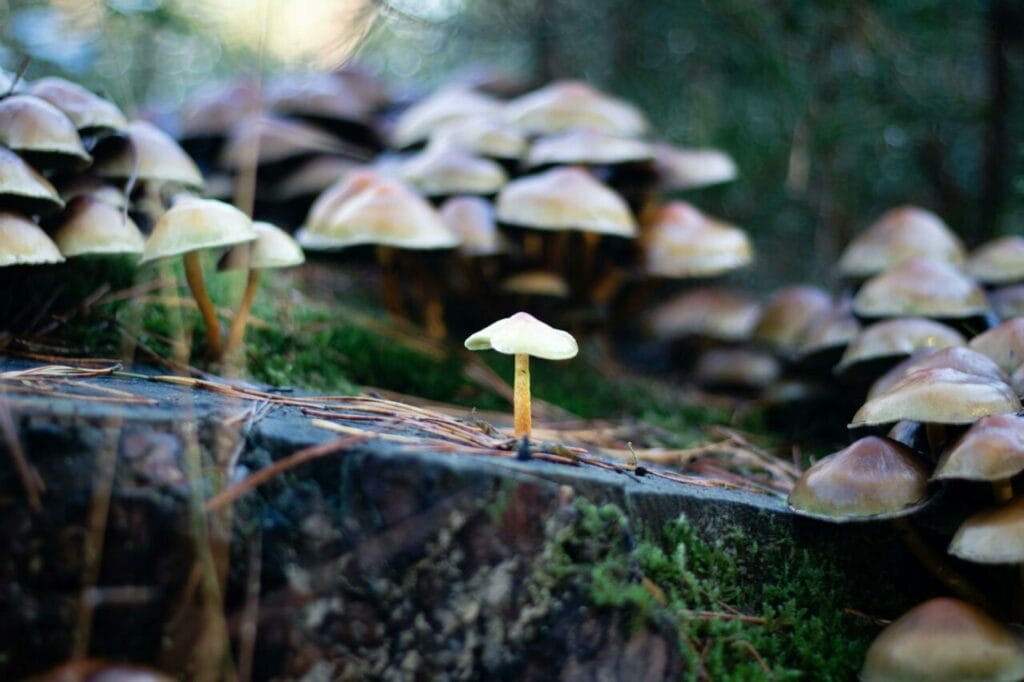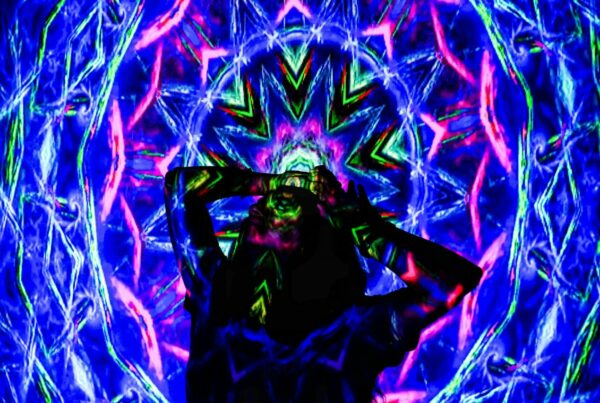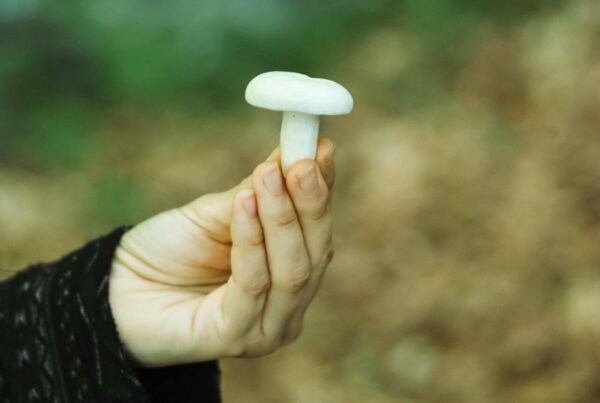Alzheimer’s Disease (AD) is a distressing neurodegenerative condition for which there is currently no cure. The increasing prevalence of this disease is causing a significant problem. In the quest for better treatment methods, scientists are investigating both natural and man-made alternatives.
Various clinical investigations have highlighted the potential effectiveness of serotonergic psychedelics like LSD, DMT, and psilocybin, in the treatment of Alzheimer’s disease. For more fascinating information, you are encouraged to explore online resources or consider “purchasing psychedelics online in Canada.”
[toc]
The Contribution of Psychedelics to Alzheimer’s Treatment
Traditional psychedelics exhibit promise in treating early-stage Alzheimer’s Disease (AD) or mild cognitive impairment (MCI) by encouraging the growth of brain cells.
Psychedelics may foster neural adaptability for learning and memory by interacting with specific brain receptors. This interaction could potentially slow down or even reverse the neurodegenerative effects of AD. Additionally, psychedelics may help mitigate depression and anxiety, common in AD patients, by inducing positive psychological responses.
Questions still arise about the mechanics of psychedelic treatments. Some suggest that the profound effects brought on by high-dose psychedelics, such as mystical experiences or a sense of self-dissolution, are vital for achieving psychological benefits. Others argue that the biological changes sparked by these substances are the key. Both viewpoints may have merit.
Traditional psychedelics appear to aid the brain in adjusting and reducing inflammation, even at lower doses. Therefore, low-dose treatments could potentially help conditions like brain degeneration or migraines without significant mind-altering effects. However, for conditions like depression, anxiety, or addiction, the mind-altering effects seem essential, leading to introspection and behavioural changes. As a result, both low and high doses should be explored for customized therapy.
The Impacts of Serotonergic Psychedelics
Serotonergic psychedelics, including LSD (lysergic acid diethylamide), DMT (dimethyltryptamine), and psilocybin (found in magic mushrooms), are gaining attention increasing interest due to their potential to provide therapeutic relief for various mental health disorders.
conditions.Experts propose that serotonin receptors, recognized for their cognition-enhancing ability and modulation of neuroplasticity, represent a promising field of study in Alzheimer’s Disease (AD) research.
These substances primarily exert their pharmacological effects through modifications to the brain’s serotonin system. This results in alterations in perception, mood, and consciousness. Supporting this concept are the following findings from multiple studies:
- In particular, the 5-HT2A subtype of these receptors affects the gene expression of neuroplasticity-enhancing neurotrophins in brain areas impacted by AD.
- Such receptors control cortical signalling, which is vital for cognition, memory, and synaptic plasticity.
- Despite their unique distribution within neurons, serotonin receptors play a role in neural development, regeneration, and plasticity.
Significant Research Findings
- Serotonergic psychedelics have shown potential in alleviating aspects of AD pathology by promoting neuroplasticity.
- Traditional psychedelics influence neurotransmission, facilitate synaptic remodelling, and enhance factors that aid neuronal survival.
- Specific psychedelics, like muscimol and Sig-1R agonists, may reduce the neurotoxicity associated with AD progression.
- Traditional psychedelics activate pathways in brain areas affected by AD, implying potential for slowing down or reversing brain degeneration.
- Psilocybin mushrooms activate neural plasticity to promote neurogenesis and induce long-lasting changes in brain circuits.
- Psychedelics improve brain connectivity by targeting receptor genes and catalyzing changes in neurons and networks.
Clinical research shows that both traditional and non-traditional psychedelics from magic mushrooms affect various biological processes in the brain. These impacts include immediate changes in gene expression and significant shifts in brain structure and function.
These psychedelics interact with receptors such as serotonin, sigma, NMDA, and GABA, leading to increased synaptic plasticity and brain rejuvenation. Consequently, psychedelics could potentially have beneficial impacts on behaviour, memory, and cognition, making them promising treatments for AD and related disorders.
Buy Psychedelics Online in Canada
Considering microdosing magic mushrooms?
Welcome to our online store, home to a diverse selection of psychedelic products from British Columbia, Canada. We urge you to begin your exploration with a reliable medicinal mushroom dispensary.
- LSD
LSD is a synthetic drug derived from a fungus called ergot, which grows on rye. This potent psychoactive substance can alter perceptions, emotions, and thoughts, even in minimal doses.
Excessive consumption of LSD can result in powerful hallucinations, warping your sense of time and space. Be careful, as substances sold as LSD might actually be other drugs such as NBOMe or members of the 2C drug family.
| Product | Kittease – Ketamine Microdose Troche (30x50mg) | Zenly – LSD Gel Tabs – 600ug (100ug Per Tab) | Zenly – LSD Gummies – Sour Zen Berry – 200ug (100ug Per Gummy) |
| Purposed Use | Stress, depression, pain management, PTSD, OCD, work stress, performance anxiety, insomnia, addiction | Extraordinary experiences | Extraordinary experiences |
| Dosage | 50mg per troche / 30 per pack – 1.5 grams of ketamine per pack | 600ug total/6 Tabs (100ug/Tab) | 200ug total/2 Gummies (100ug/Gummy) |
| Usage Instructions | Consume one full troche | Take one full tab to experience the full effect. Wait for at least 2 hours before consuming more. | Consume one full gummy to experience the full effect. Wait for at least 2 hours before consuming more. |
| Benefits | Quick effect with minimal risk, increased openness, ideal for introspection and cognitive improvement. | Precisely measured dose for an optimal trip, lab-verified | Precisely measured dose for an optimal trip, lab-verified |
- Magic Mushrooms
Over 180 mushroom species have been identified as sources of psilocybin and psilocin, substances known for their healing benefits and positive impacts. on mental health.
The impact can vary based on the type of mushroom, the cultivation batch, the amount consumed, and individual tolerance. Some people choose to microdose for subtle effects, while others ingest larger amounts for a deeper experience. The quality can likewise fluctuate, contingent on the cultivation techniques.
The Blue Meanies, scientifically referred to as Panaeolus cyanescens, are petite dried fungi that prosper in warm tropical climates, typically growing on cow and water buffalo dung. As they grow, they display blue spots on their surface, giving rise to their name.
- These fungi are abundant in psilocybin and psilocin, which are highly concentrated.
- They have been used recreationally, especially among the Balinese people, who consume them during celebrations and for artistic inspiration.
- They are popular among tourists and travelers in Bali and similar regions due to their hallucinogenic effects. These effects may include feelings of euphoria, hallucinations, happiness, and intense laughter.
- DMT
DMT, a potent hallucinogenic compound, is present in certain plants such as Psychotria viridis and Chacruna. Often dubbed as the “spirit molecule,” these regulated substances can trigger profound psychedelic experiences, offering a fleeting but intensely immersive journey characterized by vibrant visual and auditory hallucinations.
| Product | Dream Machine – Vape Cartridge – DMT 1ml | Integral Alchemist – ACACIA Changa Pre-Roll | Integral Alchemist – Mimosa- 1ml DMT Vape Cart |
| Description | Explore hyperdimensional realms with DMT. | Experience ayahuasca-like effects, combining a mix of herbs and DMT. | Embark on a journey of mystical visions and spiritual insights with DMT. |
| DMT Content | 1g | Approximately 90mg | 1ml |
| Instructions | Preheat the cartridge and inhale | Take your time and smoke the pre-roll at your own pace. | Experience immediate effects upon inhaling the vapor. |
| Effects | Intense hallucinations, alterations in consciousness. | A visual, psychedelic journey with extended duration. | Experiences of spiritual enlightenment, euphoria, and significant shifts in perspective. |
| Duration | Varies from person to person | Lasts up to 1 hour | Effects felt for up to 30 minutes |
Understanding the Long-Term Effects of Using Psychedelics
Current research endeavors seek to comprehend the long-term consequences of consuming psychoactive substances. The phrase “long-term effects” alludes to any lasting changes in cognition, emotion, or memory stemming from prolonged psychedelic use, although our understanding in this area continues to expand.
The exploration of long-term effects associated with psychedelics is complex. Some studies suggest potential mental health benefits, while others point towards risks, such as the onset of psychosis.
Despite this intricacy, researchers persist in their attempts to understand the long-term impact of psychedelic use on mental health. They are conducting thorough investigations and tracking individuals over lengthy periods to obtain more accurate data.
Purchase Cannabis from a Reputable Source
Research indicates a significant paradigm shift in Alzheimer’s disease treatment, suggesting that psychedelics could revolutionize our approach to brain disorders. Experts propose that the therapeutic application of these substances could completely alter Alzheimer’s treatment, offering newfound hope to numerous patients and their families.
For premium quality products, select a reputable provider such as Micro Zoomiez Canada. Offering a broad range of cannabis products, including flowers, edibles, concentrates, and more, Micro Zoomiez Canada guarantees genuine, lab-tested items that meet strict food and drug regulations.
Place your order for shrooms online now.
Frequently Asked Questions
What distinguishes psychedelics from other substances typically employed in Alzheimer’s treatments?
Psychedelics are unique from traditional Alzheimer’s medications due to their therapeutic approach and effects. They initiate new neural connections by engaging the brain’s serotonin system, resulting in profound psychological experiences that foster emotional wellbeing.
Unlike conventional drugs that primarily manage symptoms, psychedelics are under review by Health Canada for their long-lasting benefits and comprehensive treatment approach, which includes therapy.
Research into the use
Psilocybin stands out from traditional controlled substances due to its potential therapeutic effects for conditions like obsessive-compulsive disorder, as well as its safety record in not causing multi-organ system failure.
Can psychedelic-assisted therapy be an effective treatment option for Alzheimer’s patients dealing with end-of-life distress?
Psychedelic-assisted therapy may offer a glimmer of hope for severely ill Alzheimer’s patients struggling with the reality of their mortality.
- Offers emotional relief. This therapeutic approach has been reported to reduce anxiety and sadness in some individuals, especially those with serious illnesses. It could potentially be beneficial for Alzheimer’s patients as well.
- Generally safe when supervised. Psychedelics, when given in a controlled environment under professional supervision, are typically safe and well-tolerated by most people.
- Possibly improves quality of life. An emotional boost can greatly impact an Alzheimer’s patient’s life quality, even without any improvement in memory impairment.
- More studies are required. Though the therapy seems promising, more research is needed to validate its safety and effectiveness for Alzheimer’s patients, particularly those in their life’s final stages.
How long does a psychedelic therapy session last for Alzheimer’s patients?
- Preparation Phase. This initial stage involves one or two sessions, each lasting for about 1 to 2 hours. The aim is to ready the patient for the upcoming journey, establish expectations, and build a trusting relationship with the therapist.
- Main Psychedelic Session. The central session, where the psychedelic substance is consumed, typically lasts around 4 to 6 hours. The patient spends this period in a controlled setting, often lying down with eye shades on and listening to music, under the therapist’s attentive supervision.
- Integration Phase. Following the main session, follow-up meetings help the patient process and integrate their experience. These sessions usually last 1 to 2 hours each, with the total number of sessions varying based on individual needs.
You might also be interested in:





